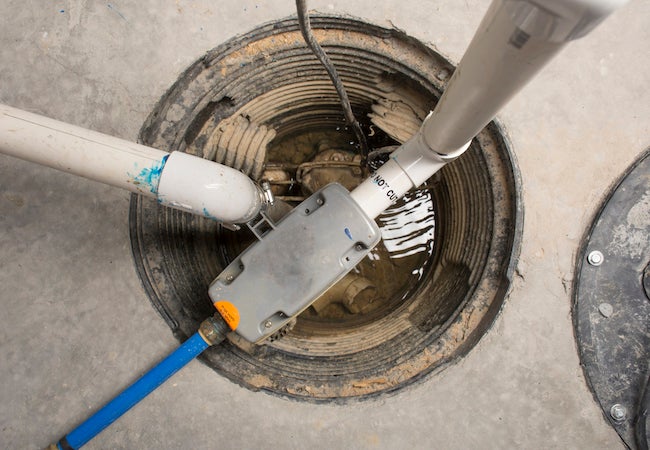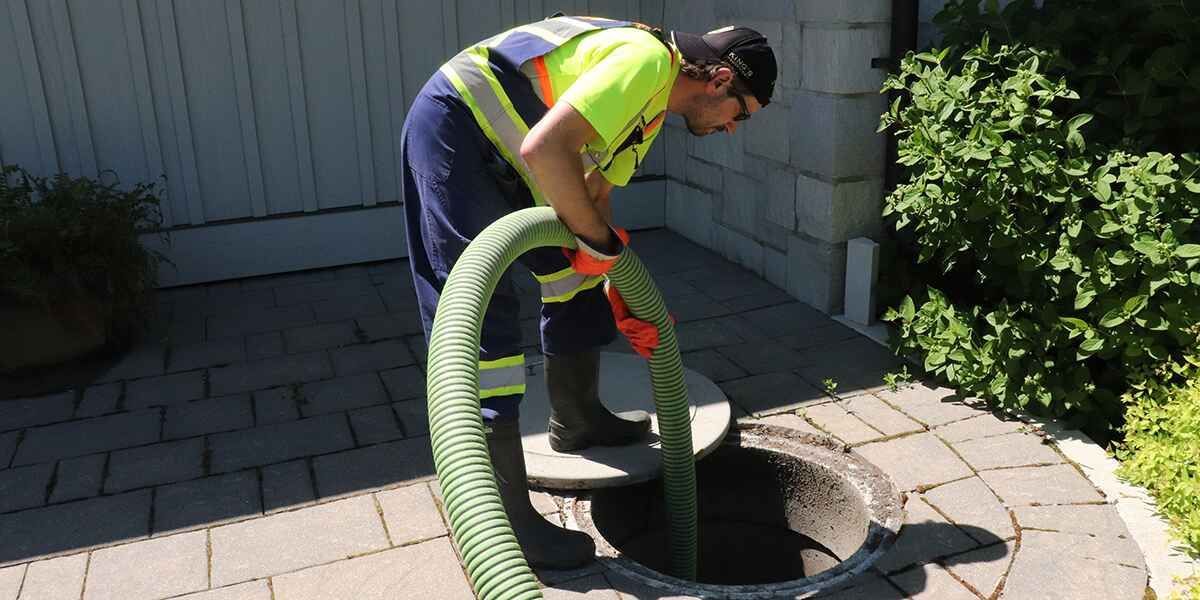Were you searching for advise on How To Effectively Clean A Sump Pump?

Sump pumps are essential parts in lots of homes, especially in areas prone to flooding or excessive moisture. They assist protect against water damage by efficiently getting rid of excess water from basements or crawl spaces. However, like any other home appliance, sump pumps require routine maintenance to ensure they work successfully when needed the most. Cleaning your sump pump is a crucial part of its maintenance, and comprehending exactly how to do it properly can conserve you from costly repair services and prospective catastrophes.
Intro
Keeping a clean sump pump is vital for its correct performance and durability. Overlooking this necessary job can cause obstructions, malfunctions, and eventually, water damages to your property. For that reason, learning how to clean a sump pump is crucial for homeowners who depend on these tools to keep their basements dry and protected.
Comprehending the Sump Pump
Before diving right into the cleansing procedure, it's necessary to have a standard understanding of exactly how a sump pump functions. Normally installed in a pit or container listed below the basement flooring, a sump pump contains a number of key parts, including a pump, a float switch, and a discharge pipe. When water accumulates in the pit, the float switch triggers the pump, which after that pumps the water out via the discharge pipeline, away from the building's structure.
Signs of a Dirty Sump Pump
Understanding when your sump pump needs cleaning is critical for protecting against potential breakdowns. Some usual signs that indicate an unclean sump pump consist of unusual sounds throughout procedure, reduced water flow, and visible debris in the pit. If you observe any of these signs and symptoms, it's essential to clean your sump pump immediately to stay clear of any type of further concerns.
Getting ready for Cleansing
Before you start cleaning your sump pump, it's necessary to take some security preventative measures. Start by shutting off the power to the pump to stay clear of any kind of electrical accidents. Furthermore, wear appropriate safety equipment, such as gloves and goggles, to protect on your own from dirt, debris, and prospective pathogens.
Detailed Overview to Cleansing a Sump Pump
Shutting down the Power
Begin by disconnecting the power supply to the sump pump to stop any accidents while cleansing.
Eliminating Debris and Dirt
Utilize a bucket or an inside story to get rid of any kind of noticeable particles, dust, or sediment from the sump pit. Dispose of the debris appropriately to avoid it from clogging the pump or the discharge pipe.
Cleaning up the Pump and Float Switch
As soon as the pit is clear of debris, very carefully remove the pump from the pit. Check the pump and the float button for any indicators of damages or wear. Make use of a soft brush or towel to clean the surface areas and remove any type of built up gunk.
Purging the System
After cleaning the pump and float switch, flush the sump pit with clean water to get rid of any type of staying dirt or debris. This will certainly aid ensure that the pump runs efficiently and efficiently.
Checking for Correct Functioning
Before re-installing the pump, do a fast examination to make sure that the float switch turns on the pump properly. Put some water into the sump pit and observe the pump's operation. If everything is operating correctly, you can reassemble the pump and reconnect the power supply.
Upkeep Tips to Maintain Your Sump Pump Clean
In addition to routine cleansing, there are numerous upkeep ideas you can follow to keep your sump pump in optimal problem:
- Routine Examination: Examine your sump pump consistently for any type of indications of wear, damage, or blockages.
- Keeping the Surrounding Area Clean: Ensure that the location around the sump pit is free of debris, dirt, and blockages.
- Examining the Pump Regularly: Evaluate your sump pump periodically by pouring water into the pit and observing its procedure. This will certainly help you identify any type of potential concerns prior to they escalate.
Final thought
Cleansing your sump pump is an essential aspect of its maintenance and makes certain that it operates successfully when you require it one of the most. By following the actions laid out in this guide and including routine maintenance right into your regimen, you can extend the lifespan of your sump pump and protect your home from water damages.
6 STEPS ON HOW TO CLEAN A SUMP PUMP PROPERLY
UNDERSTANDING SUMP PUMPS
Your sump pump plays a crucial role in protecting your home by managing and removing excess water. It primarily functions as a “shield”, guarding your basement against the damaging effects of water accumulation. The pump is housed in a sump pit in the lowest part of your basement, and its job is to pump out any water that collects there.
During heavy rainfalls or when snow melts rapidly, water can infiltrate your basement, posing potential risks like flooding, structural damage, and harmful mold growth. Here, the sump pump springs into action, pumping out the intruding water and directing it away from your home.
SAFETY FIRST
Before cleaning, remember to prioritize safety. Disconnect the sump pump from the power source to prevent any accidental electric shocks. Also, wear sturdy gloves to protect your hands from any sharp or dirty components within the pump.
REMOVE THE SUMP PUMP
After ensuring your safety, the next step is to remove the sump pump from its pit. Doing this might require careful maneuvering as you don’t want to damage any pump components. Once removed, clean the sump pit to remove any accumulated debris or sludge.
INSPECT THE PUMP
Inspect the pump for any visible signs of wear or damage. Check the power cord, float switch, and impeller housing. If any components look worn out or damaged, consider replacing them to ensure optimal performance.
CLEAN THE PUMP
Thoroughly clean the pump with warm, soapy water. Make sure to rid it of any dirt, gravel, or other debris that might impede its performance. You can use a toothbrush to clean the small, hard-to-reach parts of the pump.
REINSTALL THE SUMP PUMP
- Reinstall the pump into the sump pit
- Make sure it’s positioned correctly to remove the water effectively
- Once it’s back in place, reconnect it to the power source
TEST THE PUMP
Finally, pour some water into the pit to ensure the pump works correctly. It should start automatically and begin pumping out the water; if it doesn’t, check the power source and the positioning of the pump.
Remember, while cleaning your sump pump is an essential part of home maintenance, hiring a professional plumber for a thorough inspection and cleaning at least once a year is also important. This will ensure that your pump is in optimal condition, ready to protect your home from potential water damage.
BEST PRACTICES FOR CLEANING SUMP PUMP DISCHARGE PIPES
- Regular Inspection: Regularly inspect your discharge pipes, especially during heavy rainfall or snowmelt periods. Look for any signs of blockage or damage. Early detection of problems can prevent serious issues down the line.
- Periodic Cleaning: Over time, sediment and debris can accumulate in the discharge pipes, impeding the flow of water. Regular cleaning helps keep the pipes clear and functioning efficiently. You can use a high-pressure water jet to effectively clean the pipes.
- Insulation During Winter: In colder climates, discharge pipes can freeze, blocking the outflow of water. Protect your discharge pipes from freezing temperatures by insulating them with foam pipe insulation. This will ensure the sump pump can continue to discharge water even in freezing conditions.
- Proper Positioning: The discharge pipe should be positioned to direct water away from your home’s foundation. Improper positioning can lead to water seeping back into the basement. Ensure the pipe is long enough and angled correctly.
- Installation of a Check Valve: A check valve prevents water from flowing back into your sump pit after the pump has pushed it out. Installing a check valve helps maintain the efficiency of your sump pump and reduces the risk of flooding.
- Minimize Pipe Turns: Every curve or turn in the discharge pipe can decrease the efficiency of water flow. By minimizing turns and bends in your discharge pipe, you can increase the efficiency of your sump pump.
https://www.fullspeedplumbing.com/how-to-clean-a-sump-pump-properly9999/

Do you really like more info about How to Care for Your Sump Pump? Give a remark below. We'd be glad to hear your insights about this review. We hope that you come back again in the near future. If you enjoyed our blog post please remember to pass it around. I appreciate reading our article about Cleaning & Maintenance Tips for Your Home's Sump Pump.
Call Today
Comments on “Trusted Methods for Caring for a Sump Pump”